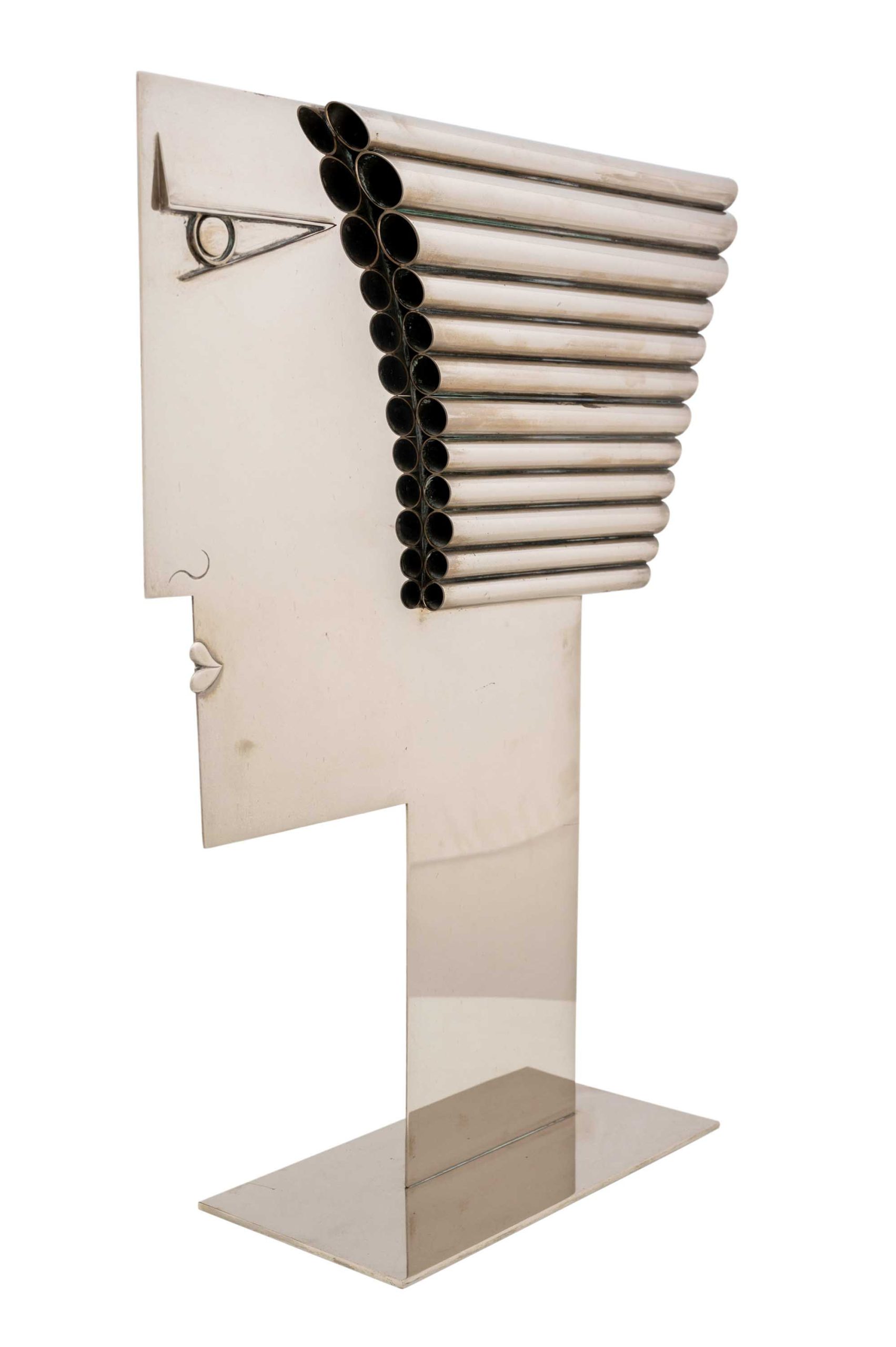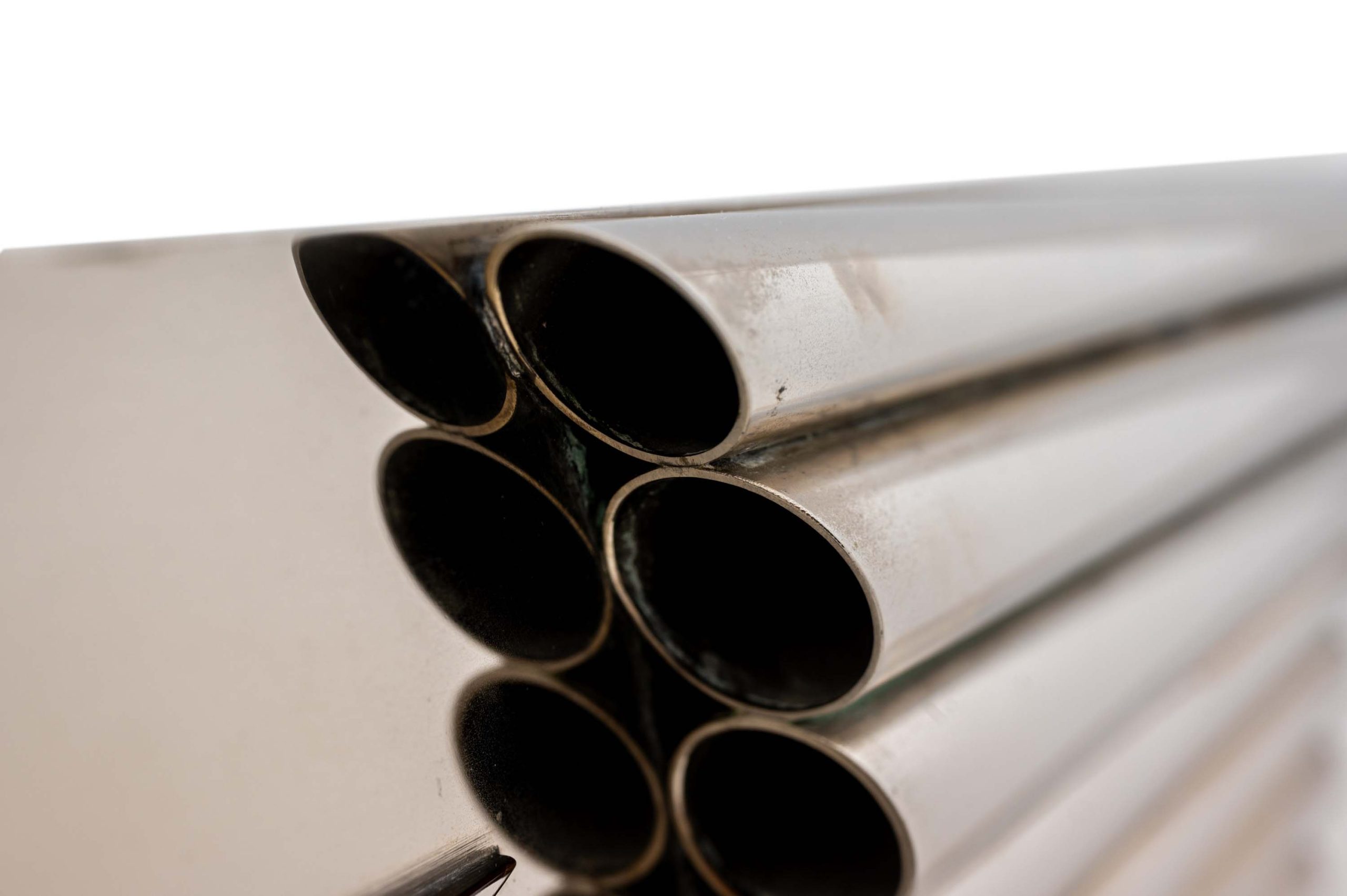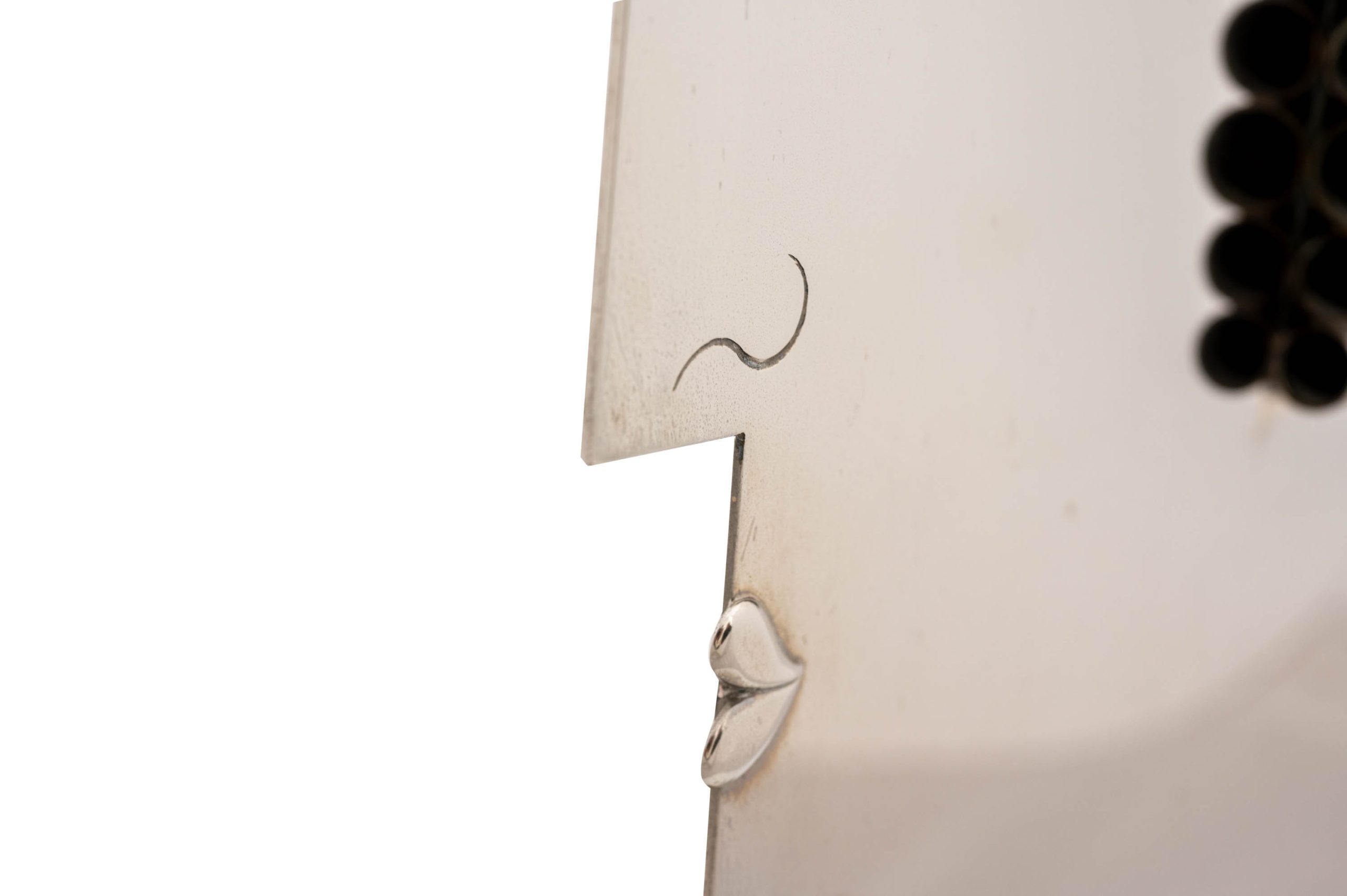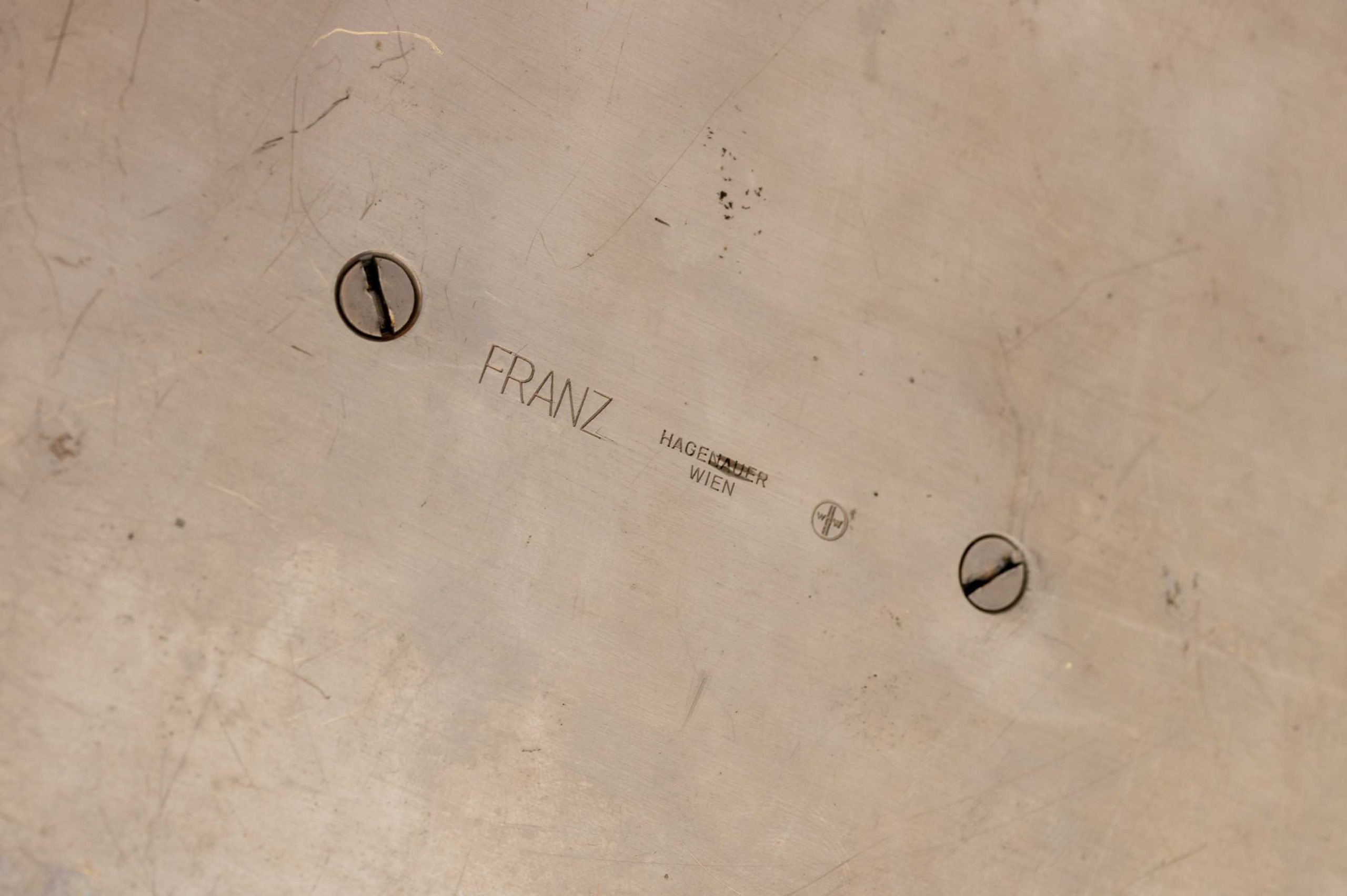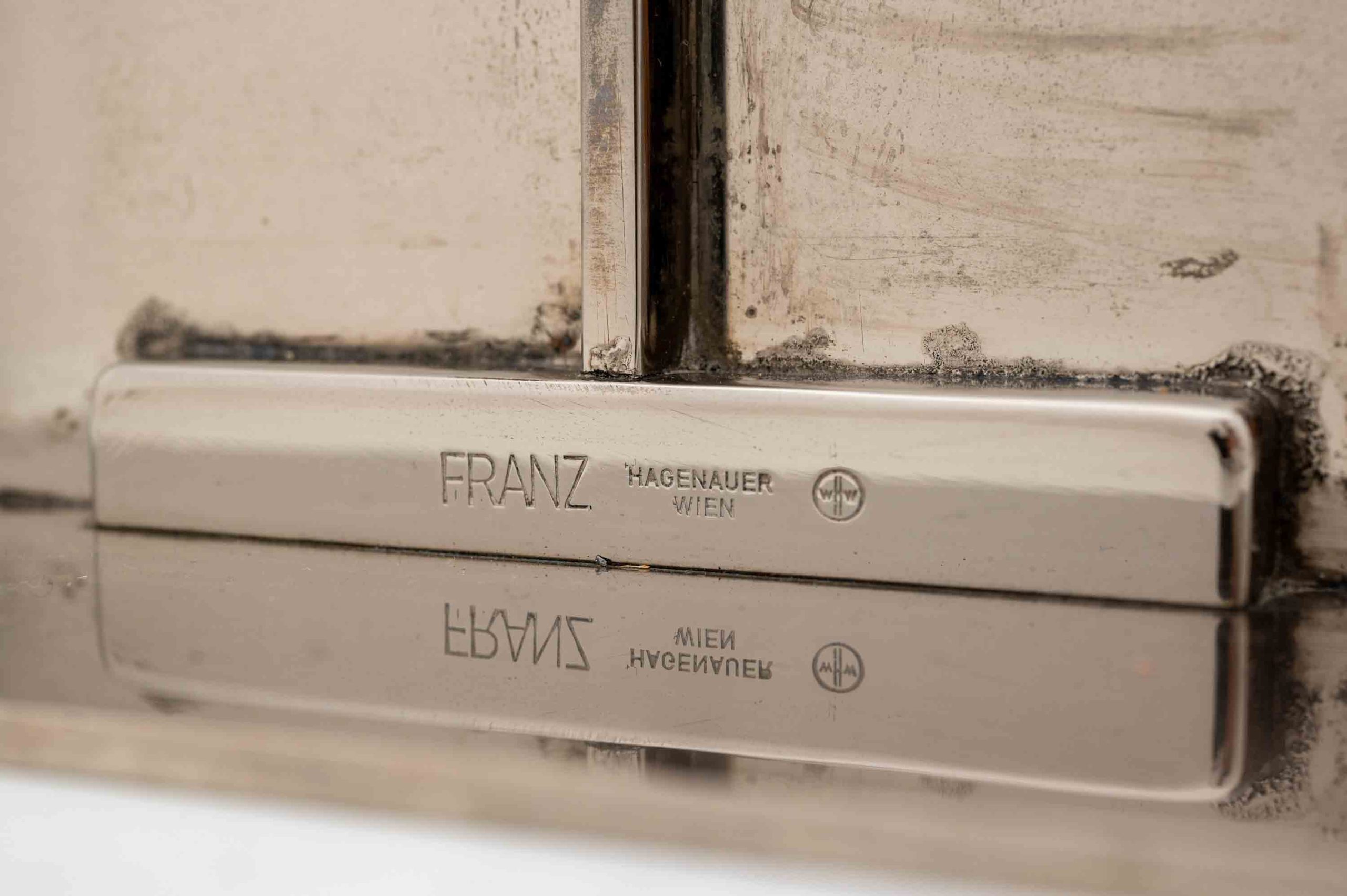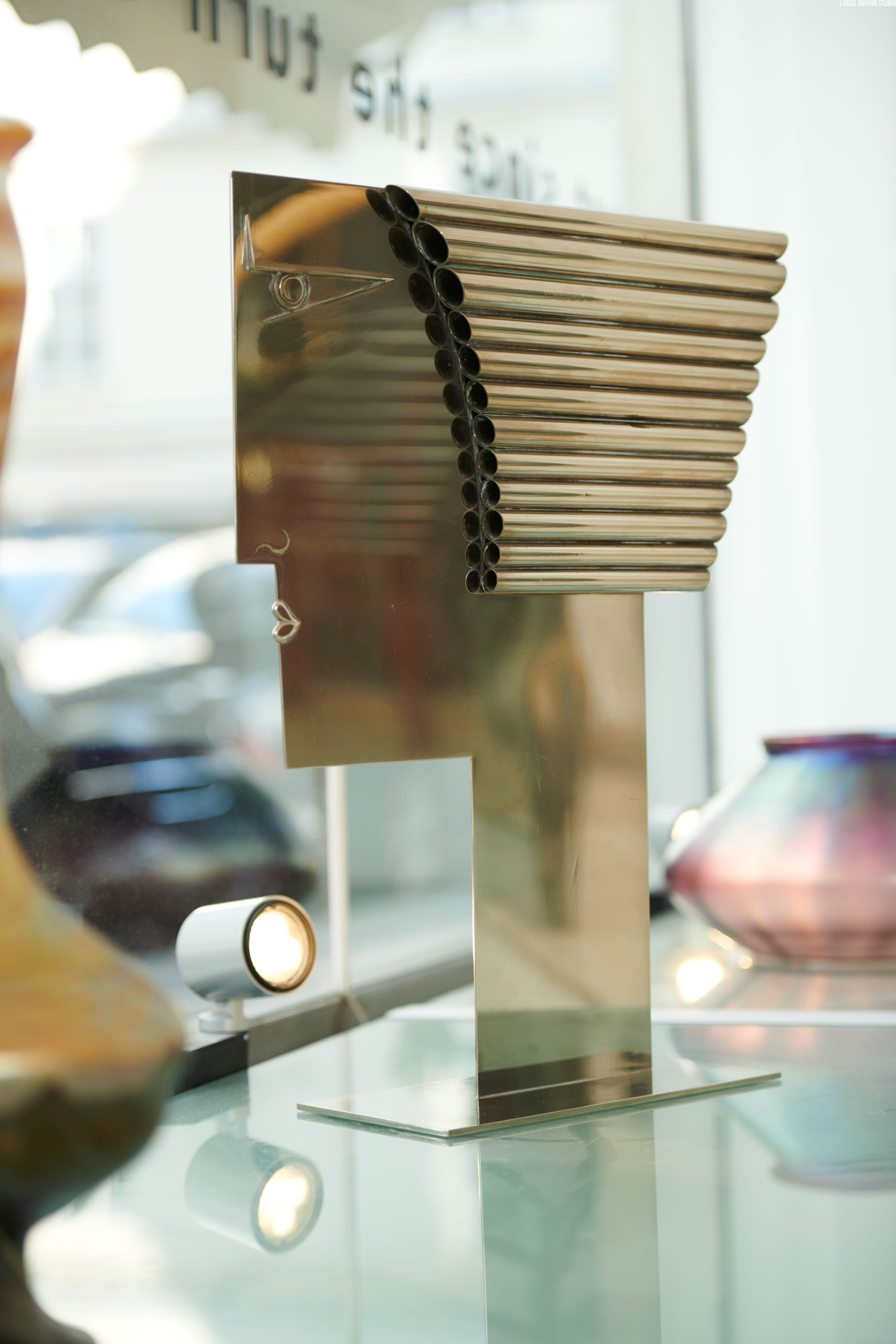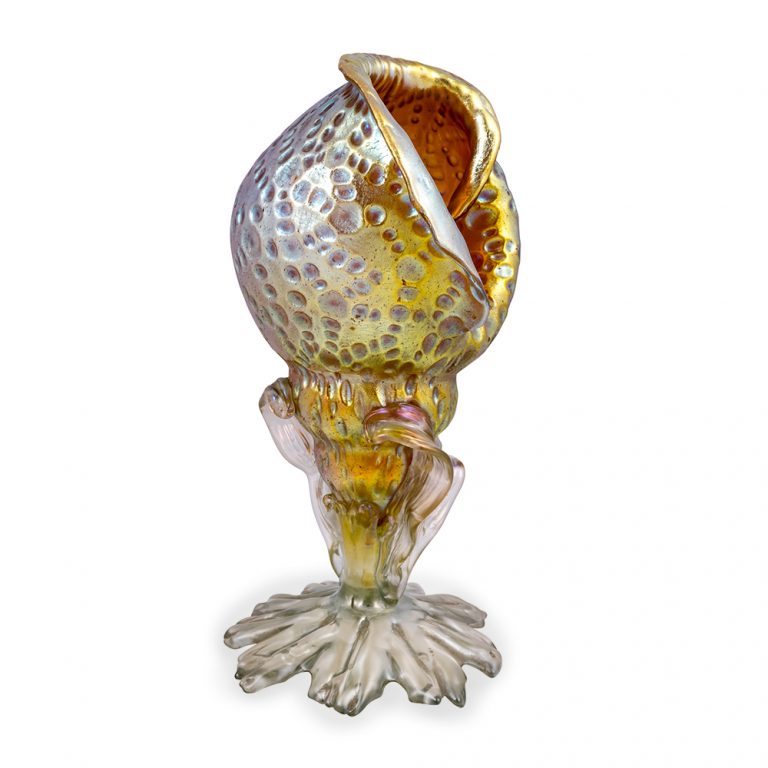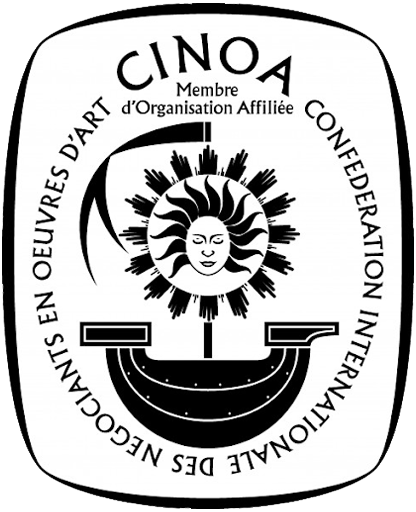Head sculpture Franz Hagenauer Werkstatte Hagenauer Wien late 1970s
Head sculpture, Franz Hagenauer, Werkstätte Hagenauer Wien, late 1970s, marked
marked ,,wHw” in the circle, “HAGENAUER/WIEN” and “FRANZ” (under the plinth) and “FRANZ”, “wHW” in the cirlce and “HAGENAUER/WIEN” (at the base); Bib.: archive of the Werkstätte Hagenauer, Museum for Applied Arts, Vienna, photograph, inventory number: KI HAF 1074, model 1040.
Description
Our head sculpture, just over half a meter high and made of brass, is a classic example of the formal language and style of Prof. Franz Hagenauer’s late oeuvre. The staging, which deviates from three-dimensionality, and its abstract geometry are typical. The strictly reduced male head is an indomitable eye-catcher in any interior and radiates a timeless elegance.
ARTIST
Franz Hagenauer (Vienna 1906 – 1986 Salzburg) was an Austrian sculptor and designer who, together with his brother Karl, ran the Werstatte Hagenauer Wien. With his avant-garde metal sculptures he wrote Austrian design history.
As the son of the master girdler Carl Hagenauer (1872-1928), Franz Hagenauer had the opportunity to learn the artisan side of metalworking in his father’s business from an early age.
Artistically inclined, he received his education at the Vienna School of Arts and Crafts from 1920, first with Franz Cizek (ornamental form theory), then with Anton Hanak (sculpture) and for a time also with Josef Hoffmann (workshop for girdling and metalwork).
After completing his education in 1925 and several study visits to Paris, Rome and Berlin, he joined his father’s metal workshop, where he officially began an apprenticeship as a girdler in 1928.
Until the death of his older brother Karl in 1956, the two brothers worked together in their parents’ business. Franz then took over the management in 1956 and continued to run the workshop until his death in 1986.
Franz Hagenauer’s youth and training period in the 1920s coincided with a time of cultural upheaval, when the various art movements of modernism were emerging, such as Art Deco, New Realism, and Bauhaus. Consequently, his early, sculptural works are also influenced by Futurism.
In his early phase until the end of the 1930s, Franz Hagenauer, in keeping with his artistic vision, worked primarily as a sculptor, producing highly stylized head sculptures, busts, and semi-plastic objects in chased metal.
The sculptures, some of which are masterfully chased from a single sheet of brass, embody the search for a modern, highly abstracted form language and are often reduced to basic geometric forms. With these high-quality one-offs, Franz Hagenauer laid the foundation for his artistic vocabulary of forms, which he would use until his late years.
During the decades of its existence and due to the corresponding economic conditions, the Hagenauer workshop at times produced more simple but nevertheless high-quality utility or decorative objects made of metal or wood. The authorship of many of these designs can no longer be attributed to either Karl or Franz Hagenauer specifically.
“It is certain… that throughout his life, Franz Hagenauer found his artistic fulfillment not in the design of utility or decorative objects, (…) but in his sculptural activity.”*.
From 1962 to 1976, Franz Hagenauer taught at the University of Applied Arts. Through his teaching activities and in exchange with the students, he received new creative impulses for his own work. This period also saw the development from three-dimensional objects to once again reduced, flatter, two-dimensional art objects, such as mask-like wall sculptures.
From the late 1960s onwards, works from the Hagenauer workshop experience increased demand in the United States. During this period, early models by Franz Hagenauer are produced again, partly in modified form, and exported directly to America.
In any case, the name Franz Hagenauer is inextricably linked with the Werkstatte Hagenauer and stands for modern, timeless Austrian design.
*Olga Kronsteiner, Monika Wenzl-Bachmeier (ed.), Hagenauer – Viennese Modernism and New Realism, exhibition catalogue Wagner:Werk Postsparkasse, Vienna 2011, p. 48
ART HISTORICAL CONTEXT

By sending the inquiry form, you accept the use of your data for this inquiry. Privacy Policy
1010 Wien
Monday to Friday: 11:00 a.m. – 7:00 p.m.
Saturday: 11:00 a.m. – 4:00 p.m.
and by appointment
Phone: +43 1 513 32 69
E-Mail: info@floriankolhammer.com



